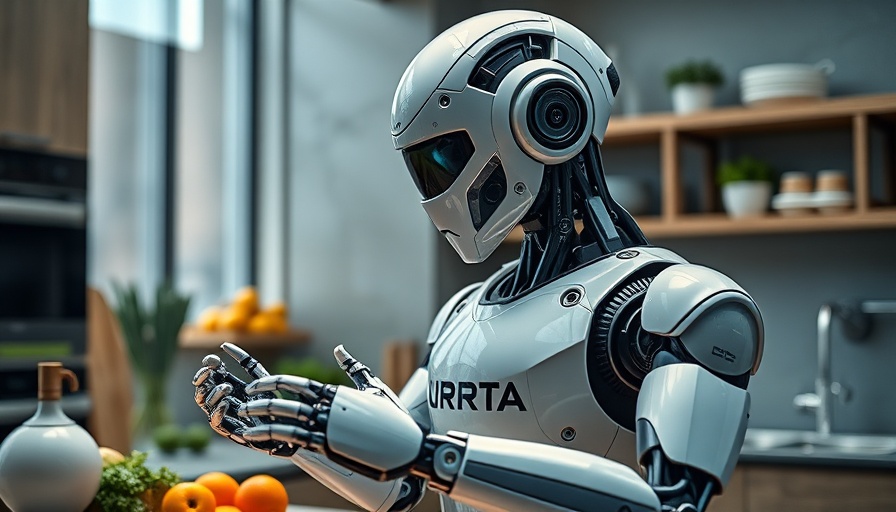
Google Unveils Groundbreaking AI Models for Robotics
In a significant leap for robotics, Google has introduced two cutting-edge artificial intelligence models: Gemini Robotics and Gemini Robotics-ER. These models are designed not just to enhance robot capabilities but to fundamentally reshape the manner in which robots interact with their environment, making them more intuitive and versatile.
Understanding the Strengths of Gemini Robotics
The Gemini Robotics model is a vision-language-action entity, specifically designed to interpret and act on natural language commands. According to Google DeepMind, robots equipped with this model can execute complex tasks through mere verbal instructions. For example, users can request that a robot fold paper into intricate origami shapes or store items in a bag, significantly reducing the programming workload traditionally associated with robotics.
Historically, the programming of industrial robots required extensive manual input, often leading to long setup periods and specialized training. However, the Gemini Robotics model allows for generality—meaning it can adapt to perform new tasks without specific preset programming. This was highlighted in tests where the model demonstrated remarkable adaptability, nearly doubling the performance of prior models.
An Exciting New Era of Dexterity and Functionality
Complementing Gemini Robotics is Gemini Robotics-ER, focused on spatial reasoning, which is essential for physical tasks. This model leverages Gemini 2.0’s capabilities to transform visual input into actionable plans, allowing robots to manipulate objects with precision. The ability to understand complex sequences enables robots to interact with their surroundings smarter, similar to how humans would approach tasks like picking up a coffee mug.
In today’s world where tasks can vary unexpectedly, the ability to replan and adapt is crucial. Carmela Parada, head of robotics at Google DeepMind, emphasized the significance of these models in enabling quick adjustments in operations, like recalibrating a robot’s actions if an object slips from its grasp.
Raising the Bar in Robot Responsiveness
The improvements brought by Gemini Robotics extend beyond basic commands. By mastering new tasks and responding effectively to unexpected changes in surroundings, this model represents a major advancement towards developing responsive, intelligent robots. Recent demonstrations featured robots employing the model to engage in complex activities like sorting groceries or managing delicate items, showcasing just how adaptable they can be.
In combination with these advancements, Google DeepMind is also committed to integrating safety measures within these powerful AI systems. A multi-layered safety approach is being developed to assess the safety of a robot's actions in real-time, reflecting a growing focus on responsible AI development across the industry.
Collaboration and Future Prospects
Google’s release of these innovative AI models marks not only an advancement in robotic design but also establishes a collaborative future. Partnerships with various robotics companies, including humanoid robot developer Apptronik, are set to integrate these powerful AI capabilities into real-world applications. Such collaborations represent a convergence of technological expertise that could lead to more refined, human-like robotics.
With the backdrop of rapid advancements in artificial intelligence and robotics, the launch of Gemini Robotics urges all AI enthusiasts to consider the hard questions around robotics' future implications. Is it promising, or does it prompt concerns about an intelligent technology merging with the physical world?
As technological evolutions continue to unfold at breakneck speed, staying informed and engaged with these advancements is crucial. With Gemini Robotics leading the charge, the horizon for robotics looks bright—and potentially transformative. Are you curious about how AI is reshaping robotics? Dive deeper into the insights that these technologies offer!
 Add Row
Add Row  Add
Add 




 Add Row
Add Row  Add
Add 

Write A Comment